Electric camping in a converted VW ID. Buzz
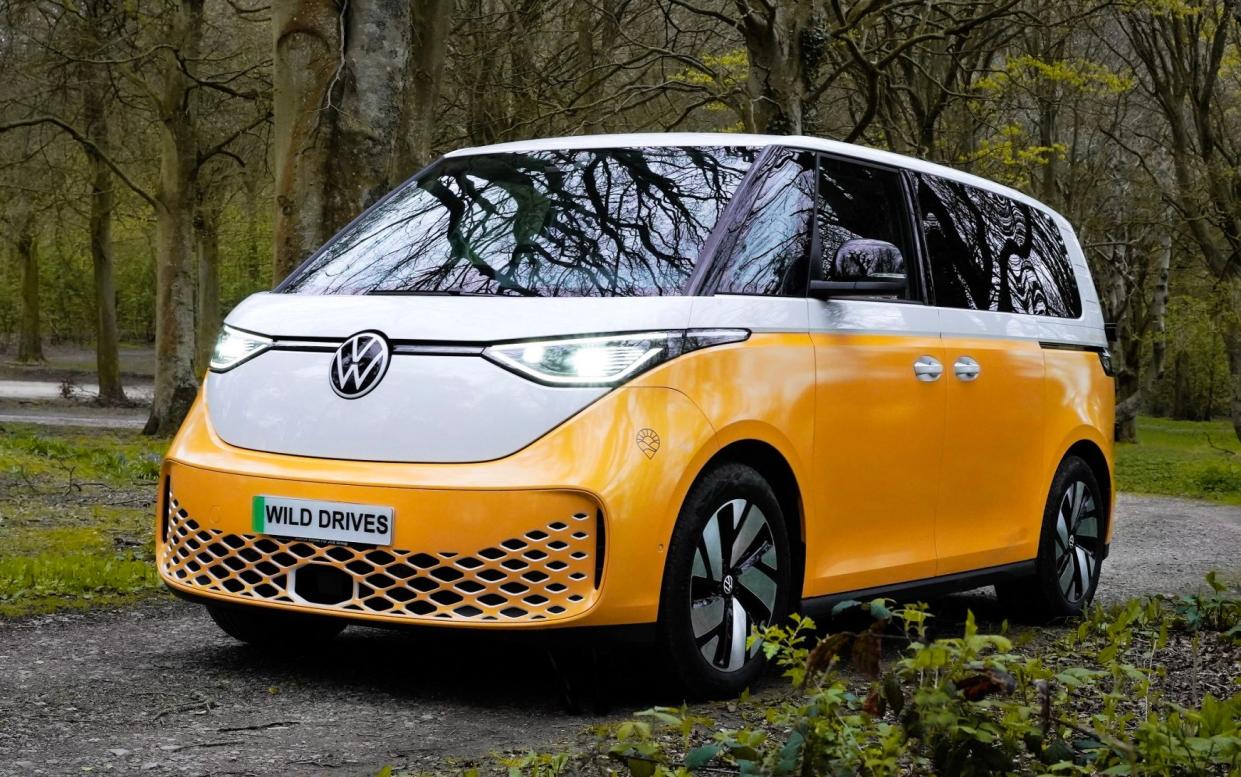
Do you know the difference between a Splitty and a Bay? Plenty of fans of the iconic original VW camper do, and many have been waiting earnestly for the camper version of its reborn, all-electric successor, the ID. Buzz. It looks to be the hippy-happy, live-in adventure wagon for a new generation.
But Volkswagen has said that there won’t be a camper model of the Buzz until 2025 at the earliest, so you may have to wait for years before the retro-inspired van has a microbus makeover to offer the same appeal as a Type 2 from the 1960s.
If that’s too much of a downer, Sussex-based conversion specialists Love Campers has already set to work on a concept ID. Buzz to create a unique home on wheels. The Buzz was commissioned solely for travel firm Wild Drives, which made the eye-catching camper available to rent for the first time earlier this year.
Based on the ID. Buzz Cargo commercial van, the battery-powered bus has a classic two-tone paint job in yellow and white to ensure it’s the talk of every campsite – as I discovered on a weekend break in Herefordshire.
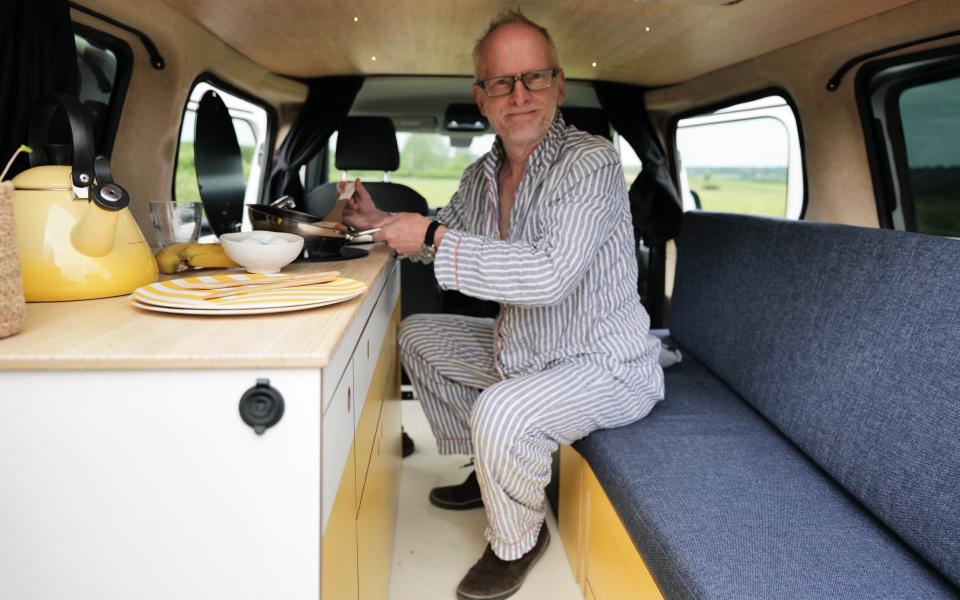
The 0-62mph time for a Buzz is around 10 seconds, but allow two minutes extra to escape the constant attention of everybody else on the road. Then factor in extra time at charge stations to cope with all the peace and love, because the V-Dub van is a true icon of counter-culture.
If you’re not a 1960s love child, the only bit of microbus history you really need to know is that, among collectors, the desirable VW van world is divided in two – Splitties and Bays. The former first appeared at the Geneva Motor Show in November, 1949 as the Type 2 Transporter: Type 1 being the Beetle.
In 1967, tears flowed behind rose-tinted glasses when the double-windscreen Splitty model was replaced with the curved, single screen Bay window version. It came with uprated everything, arguably apart from the styling. The far-out folk of that era bought four million Type 2s by 1975.
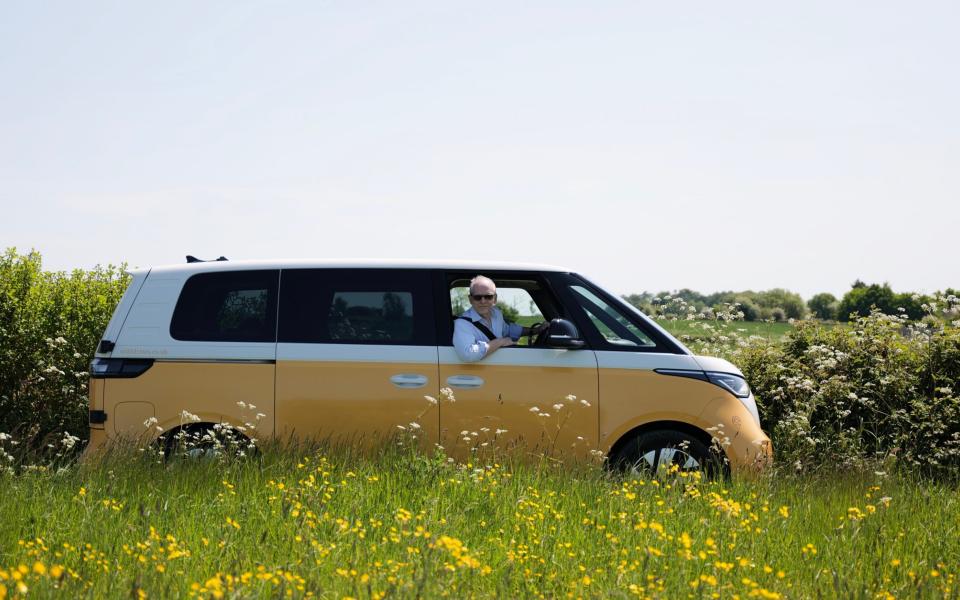
My own 1962 Splitty was called Van Morrison – not after a grumpy Ulsterman but the man who restored 908 HAB to its former glory. Instead of focusing on cupholders and interesting seating arrangements, Van was loaded with a big-valve 1,776cc engine and a five-speed Porsche gearbox.
VW happily admits that the ID. Buzz was inspired by the Type 2 and, since it was launched last year, buyers have faced long waiting times. They are chasing a BEV family-mover that is destined to be the coolest car on the school run and way beyond.
The two-seat Wild Drives camper cost £49,539 to buy, plus a further £20,400 for the conversion. In comparison, a petrol-powered VW California Beach, with room for four and pop-up roof space is £60,428 – so owners really need to dig the EV vibe to make the numbers stack up.
Up front, the cab of the Buzz is standard Cargo commercial, with pockets of storage space, some van-like hard plastics and VW’s sluggish infotainment system. However, it’s the rear where this particular vehicle offers additional room to roam.
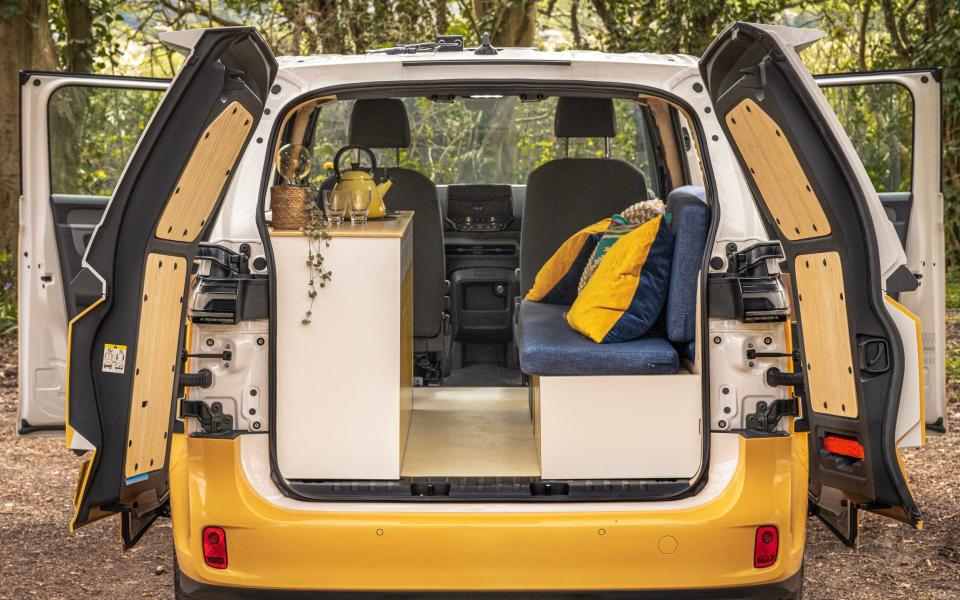
Both of the Cargo’s sliding side doors remain, while glass windows are cut into the van sides. At the back, the twin rear doors don’t feature glass, restricting the amount of light in the newly installed living area. The driver also has to rely on a roof-mounted camera for safe reversing.
A space-saving slatted bench runs fore and aft down one side, with a kitchenette opposite and narrow walkway in between. I say “walkway” – the interior headroom measures just four feet. What this camper really lacks is a pop-up roof.
Without that extra headroom and potential for a roof sleeping area, passengers need to extend the side bench into the middle of the floor to create a bed. Don’t expect long lie-ins, either, because the mattress foam isn’t that soft, while the bed only measures a cosy 31½in by 63in.
This will likely be rectified in the long-awaited VW conversion – the manufacturer is said to be working on a long wheelbase platform, instead of the Buzz short wheelbase set-up used here.
The kitchenette features a fast-heating induction hob – a serious improvement on gas – sink and cupboard space galore, plus a matching yellow kettle. Ideal for a morning cuppa, except the fridge is located under the pull-out bed, so to access milk, the sleeping area has to be reconfigured back into a bench.
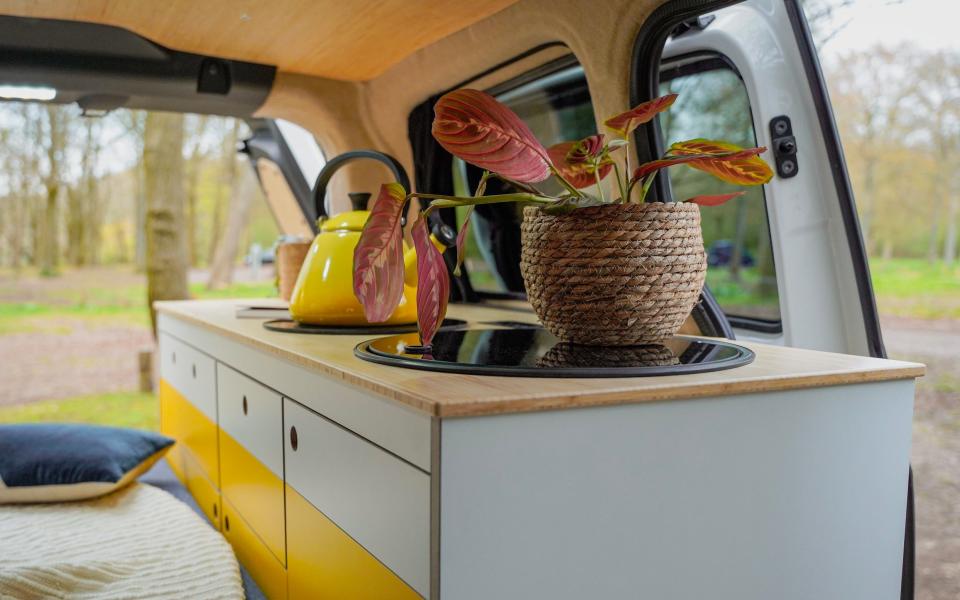
It is not the most practical layout. The set-up could be improved with a small kitchen at the rear and a folding bench seat to create a bed. Better still, a pop-up roof would cure the sleeping situation. Swivelling captain’s seats up front might make better use of a redundant cockpit area, too. Otherwise, it becomes a much-needed dumping ground for bags. Love Campers says it is already working on further designs to improve the Wild Drives concept vehicle. These include an extendable rear kitchen, pop-up roof and improved bed offering.
As an eco-friendly camper van, Wild Drives has continued the theme in its concept Buzz with a 110w solar panel system on the roof. The bedding and towels are made from sustainable bamboo – there’s even an odourless food waste compost bit. The ultimate green accessory? A litter picking kit for those quiet moments around a campsite.
With a 77kWh battery powering the electric motor that drives the rear wheels, the Buzz will tour for roughly 200 miles between charges in warmer weather, but substantially less in the winter. Seated high behind an enormous windscreen, the VW is a comfortable, relaxing ride, although the tiny door mirrors are frustrating, especially with no rearview mirror in the Cargo.
Volkswagen will no doubt design something better and more expensive, but for those who just can’t wait, or who don’t want the commitment of owning one but yearn for a week or two with the retro-modern delights of a Buzz camper, the Wild Drives van is, for now, about as groovy as it gets, man.

